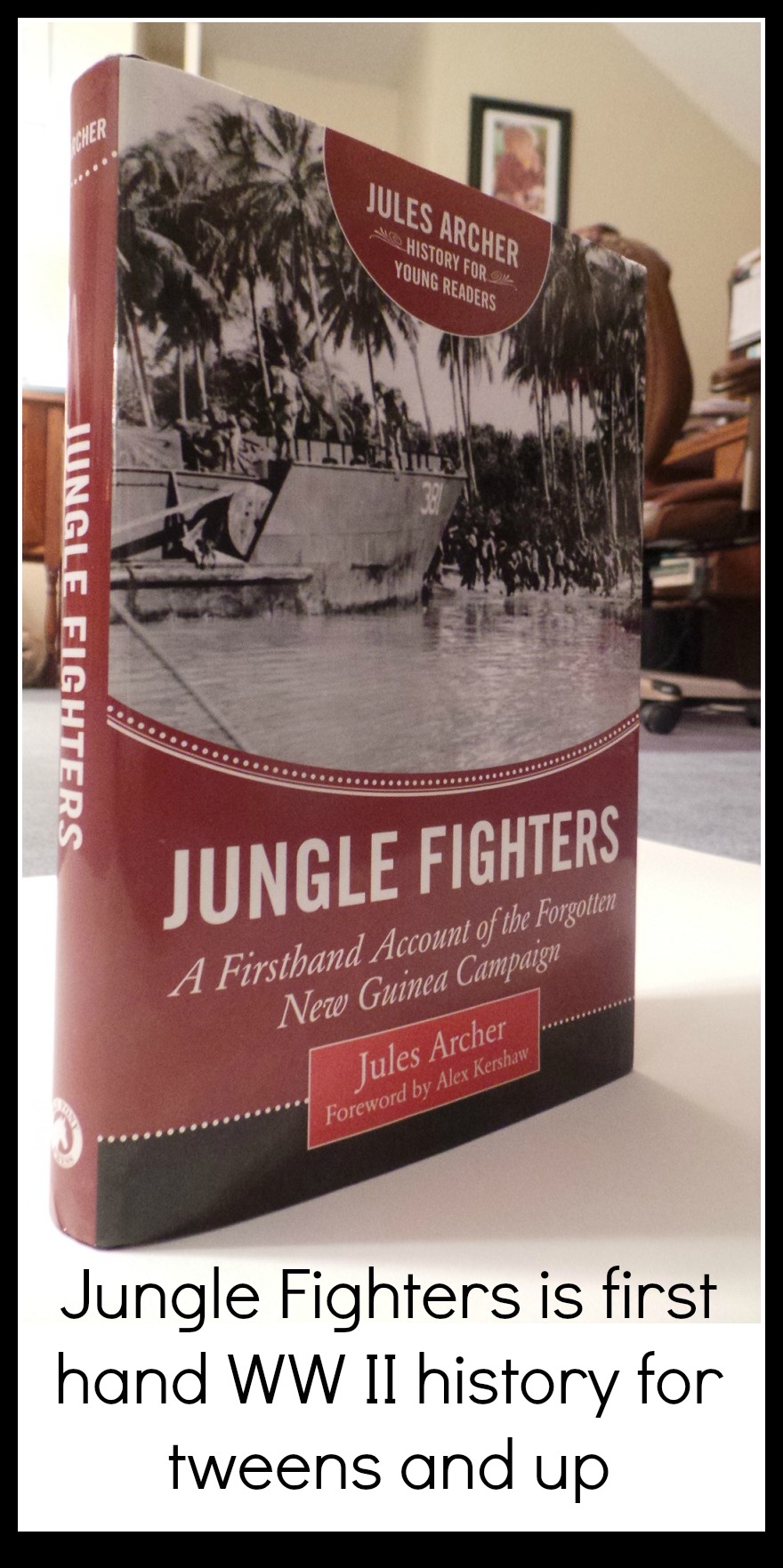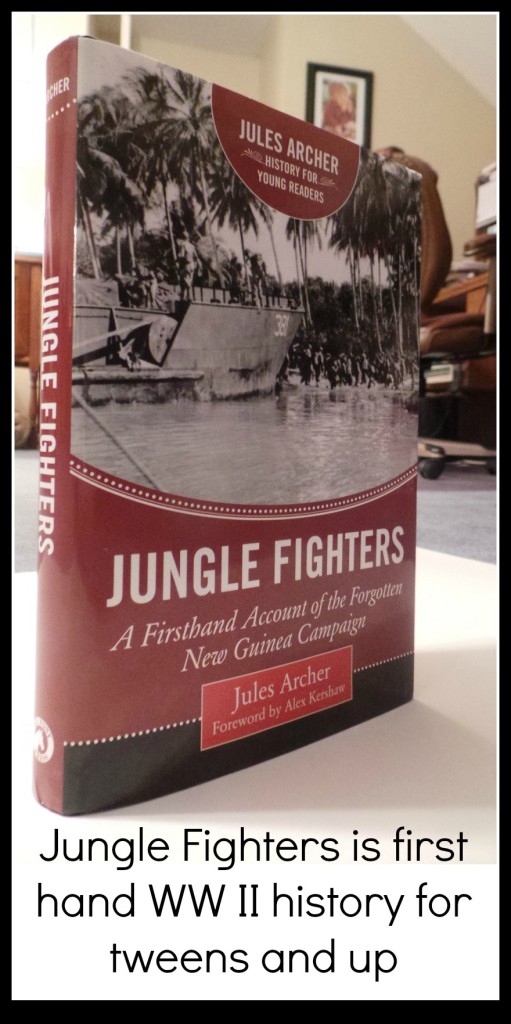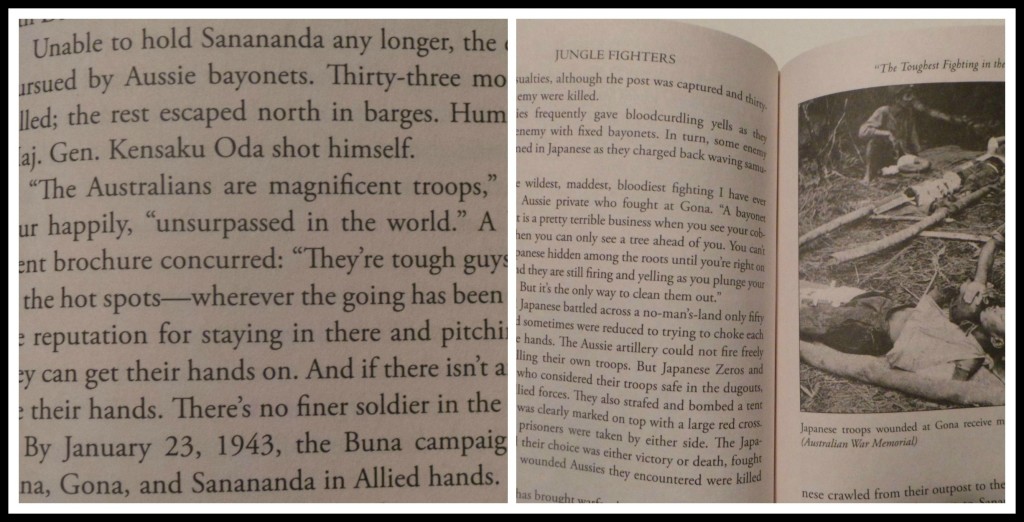Non-fiction can be a tough subject for younger readers to grasp. The subject matter may not be interesting, the text could be written in a way that doesn’t appeal to them or the content requires background information in order to comprehend what they’re reading. Originally published in 1985, Jungle Fighters: A Firsthand Account of the Forgotten New Guinea Campaign by Jules Archer is a great book for ages 12 and up because it deals with the a complex and brutal time in history in a way that young readers can digest.
The book doesn’t pull any punches by sugarcoating war or history. Archer was stationed in New Guinea in early 1942 as an emergency measure to help the Australians in their efforts to stop Japan from invading them. Reading this book today it seems alien and surreal that all of this happened in 1942. At times that seems like yesterday while other times it feels like it was lifetimes ago.
Because Archer was actually on the ground from the beginning the events in Jungle Fighters have a unique, taut sense of urgency that allows readers to better understand the story. The book is complemented with dozens of personal photos from the island and his time there. Those pictures show the living conditions that Archer and his men faced, the islanders that helped them during their time, as well as, some from the perspective of Japanese soldiers.
War is horrible. As optimistic and hopeful as parts of Jungle Fighters is, readers never lose perspective that Archer would rather be somewhere else. He was making the best of a bad situation and pushing his body, endurance and health to its limits. The book details the struggles of living in the jungle and making that environment function during wartime. Some of the photos that he took to illustrate the difficulties of that experience make you wonder how they survived, much less saved Australia from an invasion.
The historical aspects of the book are rich in detail. At the time the American media told the story that it was the reinforcements from the U.S. that saved the Pacific campaign from being lost. In reality it was a majority Australian effort, with the support of U.S. troops that were victorious. Having said that, there were thousands upon thousands of deaths, tens of thousands injured and any number of ambushes, dirty tricks and atrocities that happened on New Guinea.
Jungle Fighters manages to be descriptive, without being too graphic. The content is appropriate for 12 and up and each chapter is approximately 10 pages long. That’s a good length for this age because it’s long enough to be challenging, but not too long to where they can’t retain the information or lose interest.







 Facebook
Facebook Twitter
Twitter Flickr
Flickr GooglePlus
GooglePlus Youtube
Youtube